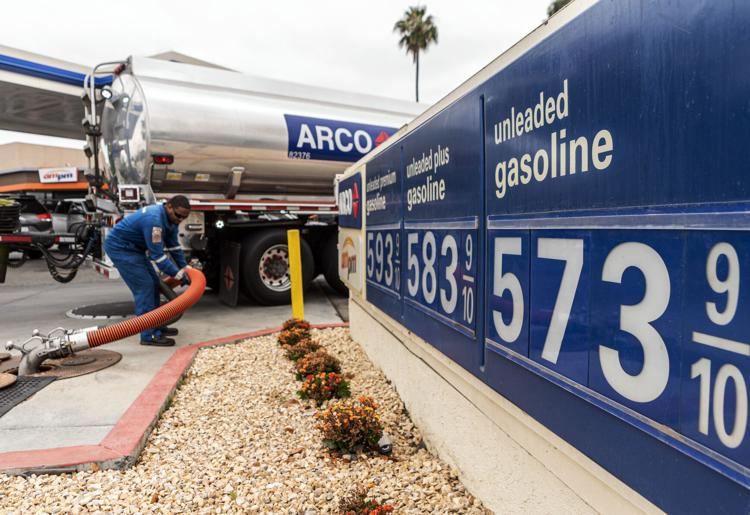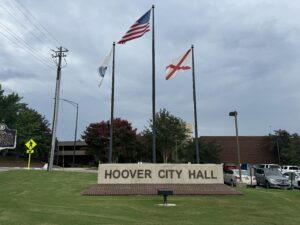Gas prices hit new record high on Memorial Day

The cost of gasoline hit a new record high on Monday as many Americans kicked off the summer season traveling over Memorial Day weekend. The average price of a gallon of gasoline climbed to $4.62 a gallon Monday, up about a penny from Sunday and $1.58 higher than last Memorial Day, when the average cost was $3.04. Many observers say the cost has yet to peak and expect only higher prices as summer wears on. “The summer driving season is here! With it, the most expensive #gasprices we’ve ever seen on a Memorial Day: $4.60/gal, and we’ll likely make a run to $4.75/gal in the next couple weeks barring any major change,” GasBuddy’s Patrick de Haan tweeted. “Est[imated] odds of reaching a national of $5/gal this summer: 65%.” Earlier in May, the average cost of gas hit a new record high every day for two consecutive weeks. The average cost of a gallon of diesel fuel was $5.52 Monday. Diesel powers the semis that truckers drive to transport food and other consumer goods across the country, contributing to 40-year-high inflation. In seven states, all but one out west, the average price of a gallon of gasoline is at least $5 a gallon. Illinois is the non-west outlier, with the average price on Monday at $5 a gallon (rounding up from $4.996). In California, the average price of a gallon of regular gasoline reached $6.15, the highest in the U.S. Republished with the permission of The Center Square.
While tragic, school shootings aren’t as common as claimed

In the wake of the Robb Elementary School mass shooting, many are claiming that school shootings in the U.S. are widespread. Two organizations refute this claim, arguing they are exceedingly rare. “School shootings are so rare that in the United States in 2021, there was one school-shooting death for every twenty-three million Americans,” Ryan McMaken at the Mises Institute reports. “By comparison, approximately one in 350,000 Americans drown each year.” McMaken, editor at Mises Wire, says, “Our children are far, far more likely to be killed in an automobile accident than in a school shooting,” but “no one in Washington is talking about highway deaths. “School shootings are a tiny subset of homicides which are themselves not exactly a leading cause of death in the United States,” he added. In 2019, there were roughly 16,700 homicides in the U.S., a rate of five victims per 100,000 people. By comparison, more than 100,000 Americans die of diabetes every year, he notes. Of the 16,700 homicides in 2019, 17 were victims of shootings at K–12 schools or 0.1 percent of all homicides. School-shooting deaths also occurred at a rate of 0.005 per 100,000 Americans. In recent history, the most deadly years for school shootings were in 2018 and 2012. In 2018, there were 39 victims killed at schools, in 2012, 26 were killed. “The data suggests policymakers should be far more concerned about children dying due to drunk-driving incidents, car accidents in general, suicide, drowning, cancer, or child abuse,” McMaken said. According to a Crime Prevention Research Center report, “schools that allow teachers to carry guns are extremely safe.” As of 2019, 20 states allow teachers and staff to carry guns to varying degrees on school property. “There has yet to be a single case of someone being wounded or killed from a shooting, let alone a mass public shooting, between 6 a.m. and midnight at a school that lets teachers carry guns,” the report states. “Fears of teachers carrying guns in terms of such problems as students obtaining teacher’s guns have not occurred at all, and there was only one accidental discharge outside of school hours with no one was really harmed. “While there have not been any problems at schools with armed teachers, the number of people killed at other schools has increased significantly – doubling between 2001 and 2008 versus 2009 and 2018,” the report points out. Texas, being one of these states, has a School Marshall Program. The Texas Legislature created the program in 2013 after the Sandy Hook Elementary School shooting in 2012. The bill was signed into law by then-Gov. Rick Perry. Initially, it allowed public school districts and open-enrollment charter schools to appoint school marshals. In the next two legislative sessions, bills signed into law by Gov. Greg Abbott expanded to include public two-year junior colleges and private schools in the list of institutions that can appoint school marshals. “The sole purpose of a School Marshal is to prevent the act of murder or serious bodily injury on school premises, and act only as defined by the written regulations adopted by the School Board/Governing Body,” according to the Texas Commission of Law Enforcement. Bosque County Sheriff Trace Hendricks has already called for schools to begin the process to implementing the program in his county. He is also offering assistance to help them do so. “It is time to take aggressive and deliberate steps toward the enhancement of our security measures in order to better protect the lives of our students and faculty,” he said in an open letter he published and sent to the heads of the school districts and school boards. “We must ensure that our schools and the lives of our loved ones are as safe and secure as possible and that none are designated as a ‘soft target.’” Republished with the permission of The Center Square.
Several Alabama legislators lose to primary challengers

At least six members of the Alabama Legislature lost to primary challengers on Tuesday, according to unofficial returns, and several races are yet to be decided. In one of the tightest races, Republican Sen. Tom Whatley of Auburn is trailing challenger Jay Hovey by four votes, according to unofficial returns. Provisional ballots will be counted next week. Hovey is a member of the Auburn City Council. In the House of Representatives, Rep. Will Dismukes of Prattville lost to challenger Jerry Starnes. His defeat came after a series of political and legal troubles. Dismukes had faced calls for his resignation in 2020 after participating in a celebration marking the birthday of Nathan Bedford Forrest — the Confederate general who was also an early Ku Klux Klan leader. He also faced a theft charge related to a dispute with a former employer. Other incumbent defeats, according to unofficial returns, included: — Republican Rep. Joe Faust of Fairhope, a 20-year veteran of the House was defeated by Jennifer Fidler. — Republican Rep. Dickie Drake of Leeds was defeated by Susan DuBose. — Republican Rep. Tommy Hanes of Bryant was defeated by Mike Kirkland. — Republican Rep. Proncey Robertson of Mount Hope was defeated by Ernie Yarbrough. — Democratic Rep. Ralph Howard of Greensboro was defeated by Curtis Travis. Republican Rep. Gill Isbell of Gadsden is trailing challenger Mack Butler, who previously served in the Legislature. But the race is caught in a mix-up where some voters got ballots with the wrong House district. Secretary of State John Merrill said they did not know how many voters were affected. Democratic Rep. Rod Scott of Fairfield was forced into a runoff with a challenger. In another notable contest, House Rules Chair Mike Jones, one of the most influential members in the House of Representatives, appears to have lost to Coffee County Commissioner Josh Carnley in his bid to join the Alabama Senate. Unofficial returns showed Carnley avoiding a runoff with Jones by a margin of about 50 votes. The two are seeking the GOP nomination for the state Senate seat being vacated by retiring Sen. Jimmy Holley. Former longtime state Sen. Hank Sanders of Selma will go to a runoff with Robert L. Stewart for the Democratic nomination for District 23. Sanders represented the district from 1982 to 2018. His daughter, Sen. Malika Sanders-Fortier, won the seat in 2018 but is leaving the state Senate to run for governor. Republished with the permission of The Associated Press.


